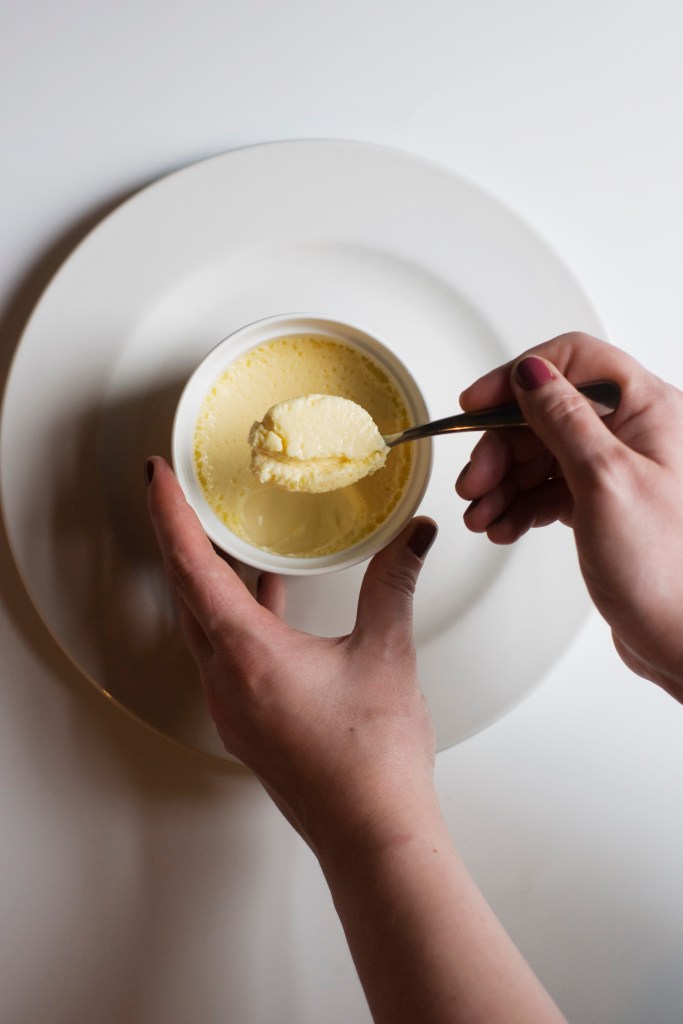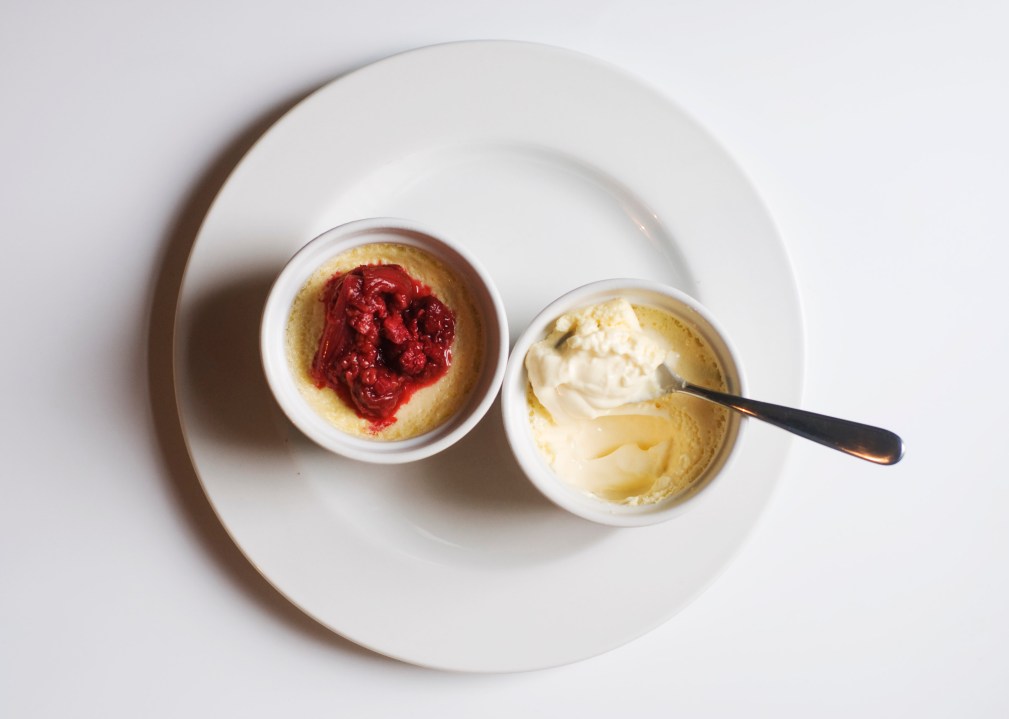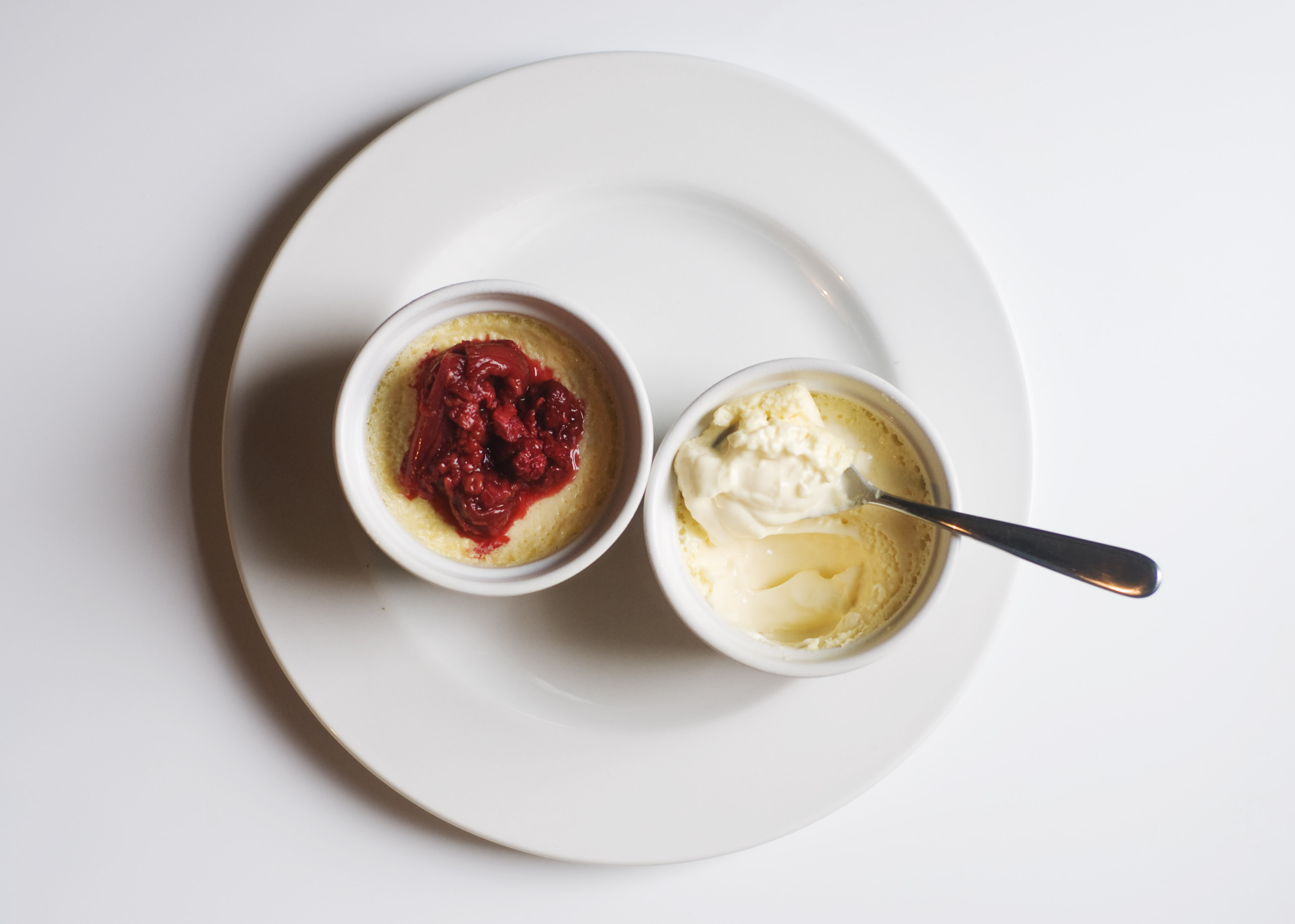I am pretty capricious when it comes to puddings. I’m always ready to declare my most recent success the king of all desserts, swearing blind I will never make anything else, and just falling short of sending a newsletter to my entire address book informing them of the new love of my life – only for a new pretender to take its place a week a later. So you would be forgiven for feeling a little dismissive when I crow about my new favourite pudding. But listen, this really is my new favourite pudding. Maybe I will never make anything else again. Baked custard pots: richer than a crème caramel, but without the distinctive brittle ceiling of the crème brûlée, these are a make-ahead wonder, fantastically impressive, and really, completely delicious.
Although the bright yellow of the egg yolk custard gives the pudding a sprightly, spring-like feel, the beauty of this pud is that it lends itself to any season: in summer, I serve it with fresh raspberries, bleeding into the yellow custard, or figs, cut into quarters half way down the fruit so that the tops open out like petals. In the autumn, I like baked plums or quince, stewed until it turns golden-pink and aromatic. Right now, I’m using the very last of the year’s forced rhubarb, that I squirrelled away in the freezer when fresh, but have now almost exhausted those supplies, unable to resist its neon lure.

Baking the custards in a bain marie can sound faffy if you haven’t done it before, but it’s pretty straightforward: the custards are baked in an extremely low heated oven, and the ramekins are placed in a roasting tin filled with boiling water. This protects the custards from the direct heat of the oven, ensuring a low, slow bake, and prevents them curdling. The result is an extremely smooth custard, just set as you dip your spoon in, but meltingly soft when eaten. Best of all, these custards have the advantage that, unlike the crème brûlée which needs a last minute blast under the grill or wielding of a blow torch, these can be made wholly in advance, and are in fact better for a rest in the fridge.
Makes 4 custard pots
Takes 10 minutes, plus chilling
Bakes 1 hour
What you need
200ml double cream
200ml whole milk
3 egg yolks
1 egg
75g caster sugar
½ vanilla pod
- Preheat the oven to 120°C.
- Split the vanilla pod, scrape the vanilla seeds out with the back of a small knife and put those in a small pan along with the pod itself, and the milk and the cream. Over a medium flame, heat these until the liquid is steaming.
- Mix the egg and egg yolks with the sugar until combined. Remove the vanilla pod from the pan, and pour the hot milk and cream over the egg and sugar mixture. Strain the custard through a sieve into a jug.
- Boil a kettle of water, and place four 150ml ramekins in a small roasting tray. Divide the custard mixture between the ramekins. Place this roasting tray in the oven and then carefully pour the boiling water into the roasting tray, avoiding the ramekins, until the water comes halfway up the side of the ramekins.
- Bake the custards for an hour, until they are set on top but will jiggle when you move them slightly. Carefully remove them from the roasting tray and, once they have cooled enough to handle, transfer to the fridge to cool completely.







Comments